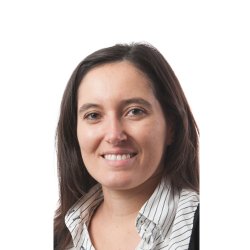Understanding Extragalactic Transients using the Rubin and VISTA Telescopes
The project will use the latest big data from the best astronomy telescopes to investigate the transient universe.
Start date
1 October 2022Duration
3 yearsApplication deadline
Funding source
Start-up fundingFunding information
Standard UKRI stipend (£15,609), international fees can be covered.
About
The international Rubin Observatory in Chile (https://www.lsst.org) will soon start operations in 2023, opening a new window on the Universe. For the first time, Rubin will be able to scan the whole multicolour sky every few days, building up a movie of our Cosmos over the next few years. Such an incredible data source will detect and identify millions of transients; astronomical objects that change in time not location. Unfortunately, the true nature of these transients will require significant and detailed investigation, and that often requires a spectrum of each object while it is still visible.
This problem will be resolved by the Time-Domain Extragalactic Survey (TiDES) that is part of the new 4MOST project presently refurbishing the ESO VISTA Telescope (https://www.4most.eu). TiDES will industrialise the automatic spectroscopic follow-up of Rubin LSST transients providing a daily stream of new and exotic spectra for detailed analysis. Simulations of TiDES (see Swann et al. https://arxiv.org/pdf/1903.02476.pdf) predict we will obtain spectra for 30,000 live transients: ten times more spectra than any other experiment in history. Such a rich database will contain all types of supernovae spanning over half the age of the Universe, and likely uncover rare types of cosmic explosions (e.g. pair instability supernova, lensed supernova, kilonova, etc.).
We are seeking PhD students to join the TiDES team at this exciting time as we prepare for first data from 2023. The initial year of the PhD will be familiarising yourself with the details of the target and early data reduction software, even helping with first observations and commissioning of the operations. In subsequent years, the PhD will move into the automated analysis of the transient spectra, determining the chemistry and dynamics of the objects through model-fitting to the spectra. This will aid in the detailed classification of the transients, while testing astrophysical models for different classes of supernovae. Such analysis always has the possibility of the serendipitous discovery of new phenomenon.
Students will learn vital skills for the future, including close team-work and resilience for working under pressure. Students will become proficient in data science techniques, advanced programming languages, statistical techniques, and hypothesis testing and reasoning. Students will be expected to present their work to international audiences through peer-reviewed articles and conference seminars, and may require travel across the globe. TiDES is ideal training for a future in data-driven astronomy or beyond.
Related links
4MOST - Extragalactic Consortium SurveysEligibility criteria
This studentship is open to UK and international candidates. Applicants are expected to hold a first or upper-second class degree in a relevant discipline (or equivalent overseas qualification), or a lower second plus a good Masters degree (distinction normally required).
English language requirements
IELTS Academic 6.5 or above (or equivalent) with 6.0 in each individual category.
How to apply
Applications must be submitted via the Physics PhD programme page on the "Apply" tab. Please clearly state the studentship title and supervisor on your application.
Studentship FAQs
Read our studentship FAQs to find out more about applying and funding.
Application deadline
Contact details
Research
Research groups

Studentships at Surrey
We have a wide range of studentship opportunities available.

